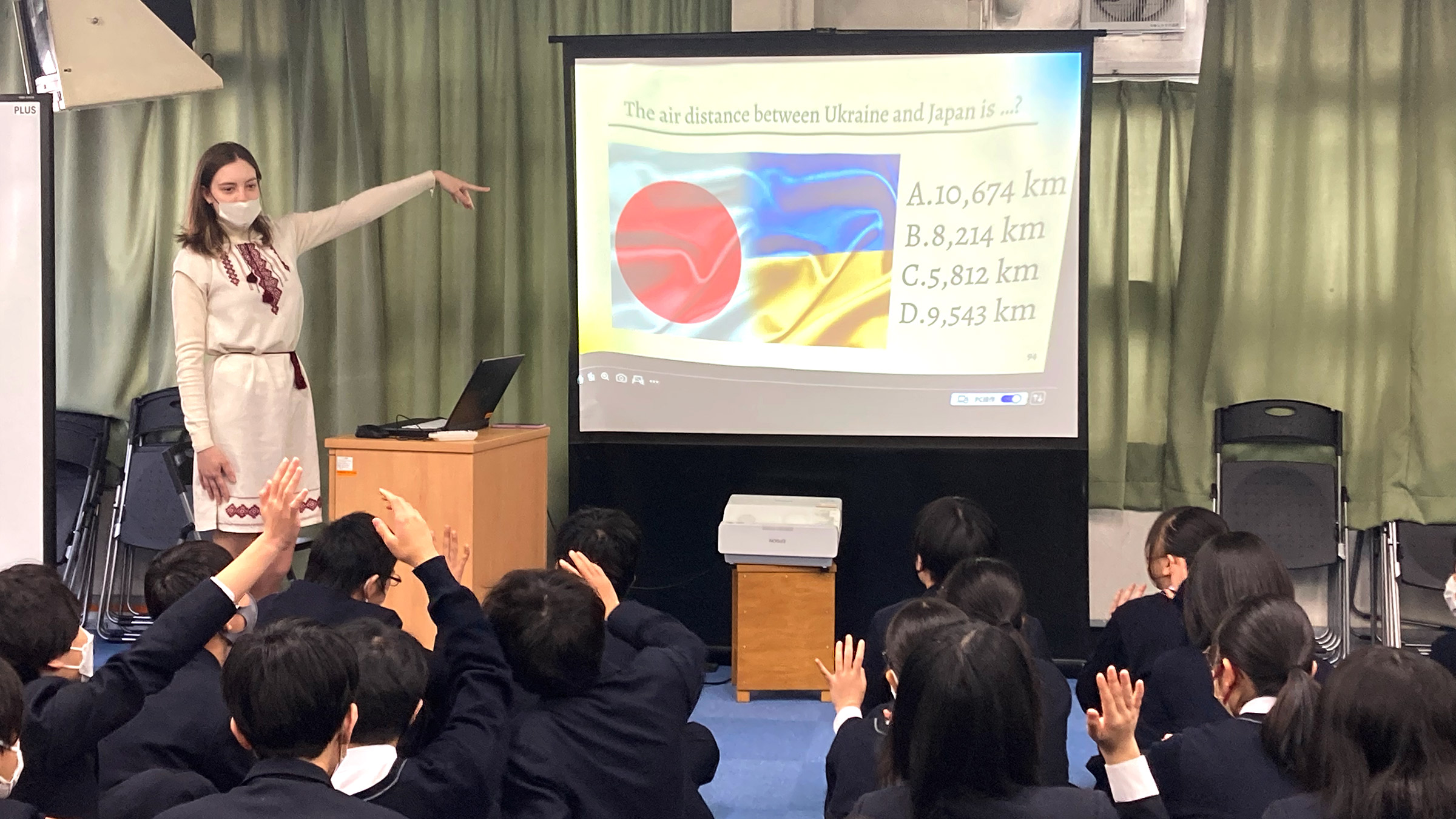Kateryna Kasadzhyk giving presentation to students at Meguro Municipal Daiju junior high school
In the late summer of 2022, nine Ukrainian university students arrived at Temple University, Japan Campus (TUJ) evacuating their country to continue their studies. They spent several semesters in Japan, immersing themselves in Japanese culture through events and experiencing everyday life in Tokyo. This article introduces some aspects of their life at TUJ and their experiences in Japan.
Ukrainian Cultural Presentation at Meguro Municipal Daiju Junior High School
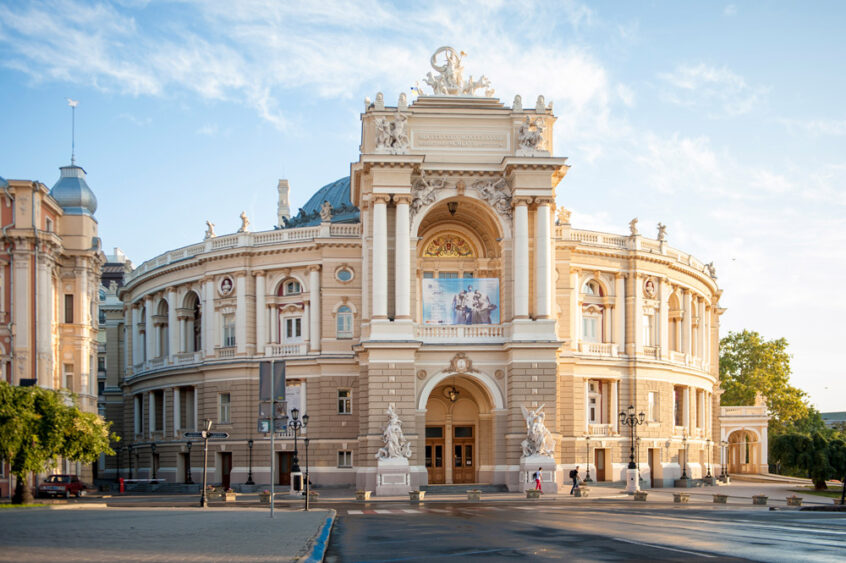
Kateryna Kasadzhyk delivered a presentation to 70 students at Meguro Municipal Daiju Junior High School as part of TUJ’s community relations program. This program aims to familiarize junior high school students with the English language and different cultures worldwide. TUJ occasionally sends students from overseas to local junior high schools for cultural exchanges. TUJ also offers short-term English language programs for elementary to high school students.
Kateryna expressed her excitement about the opportunity to go to the local school and meet with the junior high school students. She said, “It was my first time being inside a Japanese school. Previously, I had only seen it in anime or manga, and now I am experiencing it in real life. I wanted to have an experience teaching students because I want to do that in the future, and I was really happy to interact with them and talk about my country.”

During her presentation, she discussed various aspects of Ukraine’s history, culture and customs. She shared many pictures of beautiful Ukrainian architecture including the Odesa Opera House in her hometown. She also talked about some of her favorite Ukrainian dishes such as borsch, varenyky (dumplings), holubtsi (rolled cabbage) and syrnyky (a pancake-like dish).
Kateryna introduced Ukranian Easter and Christmas celebrations, poetry by renowned author and public figure Taras Shevchenko and the national dance called Hopak. She also shared famous locations such as the ‘Tunnel of Love,’ ‘the Lake of the Sofiyivka Park’ and Chornobyl, with photos and maps.

After her presentation, one student raised her hand and said, “I enjoyed learning about Ukrainian culture and geography and hearing about Kateryna’s personal feelings about Ukraine.” Another student mentioned that their perception of Ukraine had changed. “When I used to see the World Heritage sites on TV programs with my father, I had a limited image of Ukraine. However, the media reports heavily on the war. I realized that there’s much more to learn about Ukraine.” Kateryna’s presentation provided a glimpse into the vibrant and rich side of Ukraine that many people may not be aware of given current events
When I am dead, bury me
In my beloved Ukraine,
My tomb upon a grave mound high
Amid the spreading plain,
So that the fields, the boundless steppes,
The Dnieper’s plunging shore
My eyes could see, my ears could hear
The mighty river roar…
Taras Shevchenko “MY TESTAMENT”
Translated by John WeirTaras Shevchenko.
Selected poetry. Kiev, Dnipro, 1977, p.198.
Fostering Cultural Connections Through School Outreach
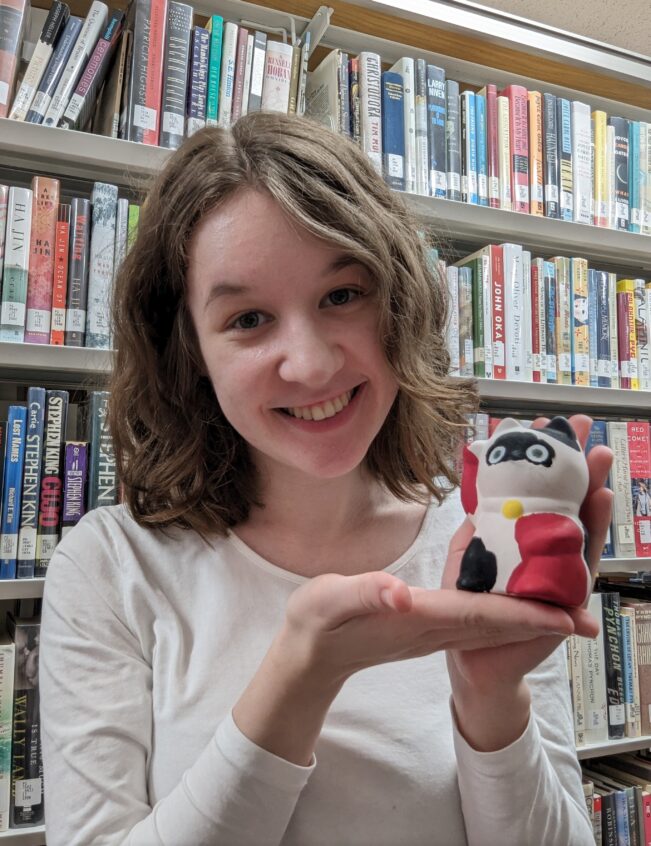
Daiana Pustovoit has also been actively involved in TUJ’s community relations program, volunteering at several local elementary and middle schools. Like her fellow Ukrainian student Kateryna, Daiana seized the opportunity to introduce the rich Ukrainian culture and traditions to young Japanese students as part of their English-class cultural learning activities.
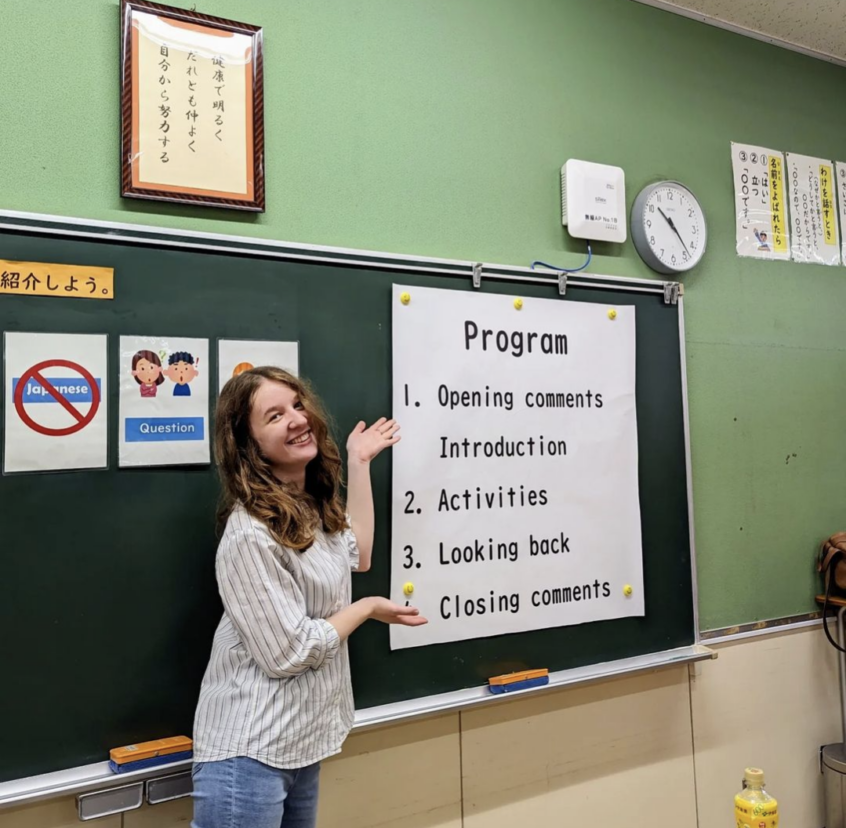
The first school Daiana visited left a lasting impression, as the students presented her with a special gift – a maneki-neko, a Japanese lucky cat figurine symbolizing good fortune. One student handed her the cat, saying earnestly, “May this lucky cat bring goodness to your country. We want it to be with you.” Daiana was deeply touched by this thoughtful gesture and the children’s sincere wishes for peace in her homeland. Prior to visiting the schools, Daiana had a preconceived idea of Japanese classrooms being extremely quiet and disciplined environments. However, her actual experience was a pleasant surprise that completely reshaped her perspective. “The children were so excited to have me there,” Daiana recounted. “They greeted me with big smiles, hugs and an endless stream of questions, eager to learn all about Ukraine.”
During another school visit, Daiana had an especially heartwarming interaction when she encountered a Ukrainian student. As they conversed in their shared mother tongue, it was a meaningful connection for them both.
Ukrainian Cultural Week : A TUJ Student Government Led Event

From February 19th to 22nd, 2024, the TUJ student government organized a Ukrainian cultural week, following past celebrations of other cultures. Daiana, Natalia Makohon and their Ukrainian peers displayed their heritage through carefully planned activities.
Over two weeks of diligent preparation, the group meticulously planned four days of immersive activities. On Monday, they screened the historical documentary “Winter on Fire: Ukraine’s Fight for Freedom,” which follows the 2013-2014 Maidan Uprising in Kyiv. As the powerful visuals unfolded, viewers savored authentic Ukrainian delicacies – nalysnyky (crepes with apple and cinnamon) and varenyky – lovingly prepared by the Ukrainian students after hours in the dormitory kitchen.
The following days featured hands-on masterclasses. Kateryna led a workshop on creating the traditional Ukrainian Motanka doll, guiding participants through the intricate process. On Wednesday, another session introduced the vibrant folk art of Petrykivka decorative painting.

On Thursday, they presented on iconic Ukrainian symbols like the meaning behind the flag’s colors, along with trivia including the location of the world’s deepest subway station and details about the massive Mriya cargo plane, engaging students with a kahoot-style quiz and prizes.
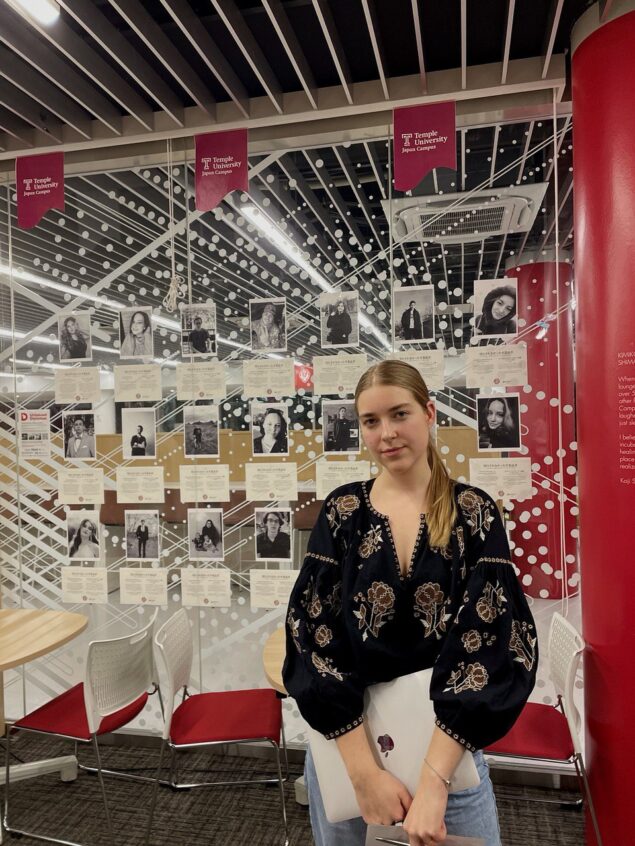
On the same day of their presentation and quiz, they presented a one-day exhibition of the “Unissued Diploma” project which displayed 20 Ukrainian college students aged between 17 to 24 years old who lost their lives during the war. TUJ Ukrainian students specifically selected cases that were more relatable to college student everyday life, like a freshman female student who was killed by bombing while visiting the dentist. This powerful project has been showcased in many countries, and TUJ joined universities like Tokyo University as hosts. “There were students who died in battle, but we wanted to highlight cases of lives lost in everyday circumstances,” shared Natalia.
Significantly, this cultural event coincided with the two-year anniversary of the ongoing war. As Natalia reflected, “It is not a happy day, but we wanted to introduce Ukraine and its culture before the war, and inspire interest in visiting the country when peace returns.” This marked the first time the Ukrainian students had orchestrated such a large-scale presentation for the entire TUJ undergraduate community, a heartfelt endeavor to share their heritage.
A Ukrainian Student’s Experience at TUJ’s ICAS Ambassador Program
Natalia had a unique opportunity to gain insights into Japanese culture through her participation in a research project organized by TUJ’s Institute of Contemporary Asian Studies (ICAS) ambassador program. As part of the program, she visited significant Japanese sites affected by tragedies such as the Fukushima Nuclear Plant and Hiroshima Peace Memorial Museum. The research project focused on “The Reconstruction of Ukraine through the lens of Japanese Reconstruction History,” which provided Natalia with valuable perspectives and knowledge.
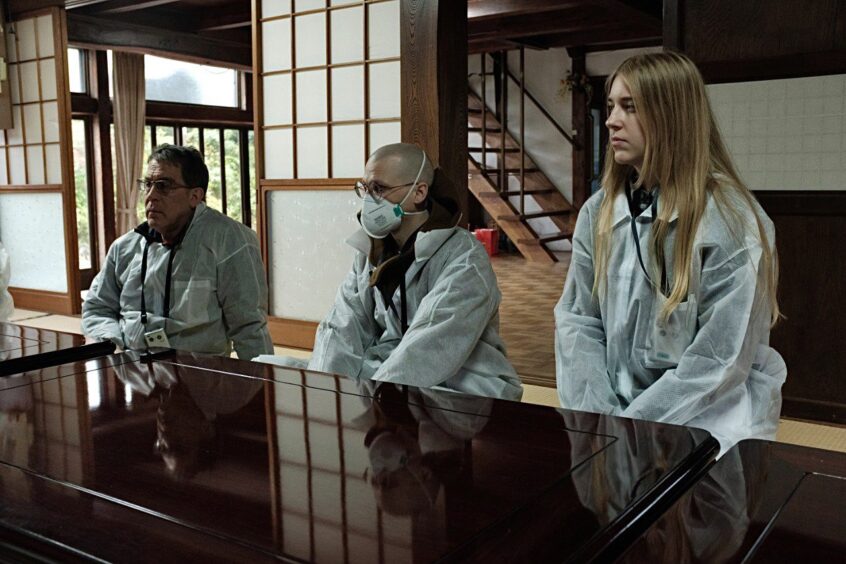
Before their trip to Fukushima and Hiroshima, Natalia and the ICAS student ambassador group spent time reading through the materials provided by their ICAS professors. “My main goal for this project was to observe and analyze the Japanese response to these catastrophic events and see if we can apply any of their strategies to Ukraine,” Natalia commented. During their visit to Fukushima, the ICAS program members had the opportunity to explore the inside of the nuclear power plants and to speak with the local evacuees. “As someone who has always had an interest in nuclear catastrophes, I had visited Chornobyl in Ukraine before, but I never expected to be able to visit Fukushima and continue my exploration. While it’s hard to compare the two disasters since Chornobyl was man-made and Fukushima was caused by a natural disaster, we can still find similarities in their response to these crises. Ultimately both Ukraine and Japan have a shared responsibility to educate the world on how to prevent such catastrophes in the future based on their past experiences. Unfortunately, not many people are interested in this topic of nuclear catastrophes, but this is nothing far from us and it’s important for us to learn from these historical moments. History repeats itself, but if we have the knowledge, we know how to act. “
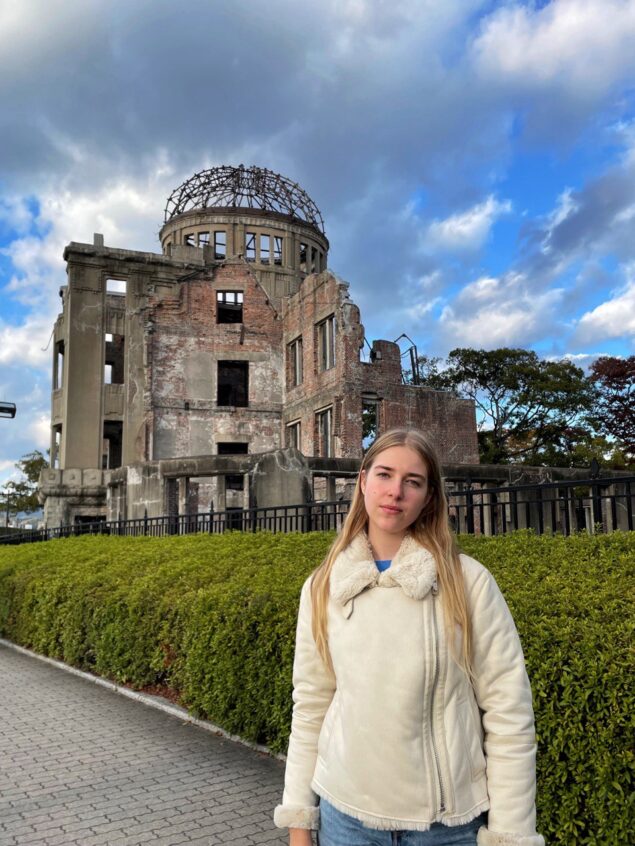
During her visit to Hiroshima, Natalia had the opportunity to speak with a Hibakusha, an elderly survivor of the atomic bombing. The woman was a well-known figure who shared her story in English and had even spoken with Ukrainian President Zelensky and US President Biden at the Hiroshima summit in 2023. Natalia and the ICAS group also visited the Hiroshima Peace Memorial Museum, a place that left a lasting impact on her. “I will remember this visit forever, because it was so heartbreaking, and it is 100% impactful. I could not sleep that night after returning to the hotel, still processing the information in my brain. It changed something inside of me.” At the museum, she was moved by the written stories showcased, as they were able to convey so much emotion with just a few words. “Today we are heavily dependent on videos and photos to acquire information, but a short sentence like ‘Mom it hurts, give me water’ can already make you imagine this scene and break your heart. I really hope everyone in the world can visit this museum, especially those who have never experienced war. (The exhibition) has the power to change one’s mindset.”
Through a variety of TUJ programs, Ukrainian and Japanese local students, as well as TUJ students from all around the globe were able to participate in cultural exchange programs, which allowed them to gain a deeper understanding and knowledge of each other’s culture and history. We believe that such experiences can contribute to making the world a better place, one step at a time
Other related stories
- Extends Scholarship Program for Ukrainian Students, More Partners Join Initiatives to Provide Housing (May 1, 2023)
- Ukrainian Students at Temple University, Japan Campus: The Evacuation from Ukraine ‘A Constant Search for Safety’ (November 10, 2022)
- TUJ Participates in Joint News Conference on a Scholarship Program for Ukrainian Students (June 20, 2022)
- Temple University, Japan Campus to Provide Academic Assistance and Financial Support to Ukrainian Students (June 3, 2022)

